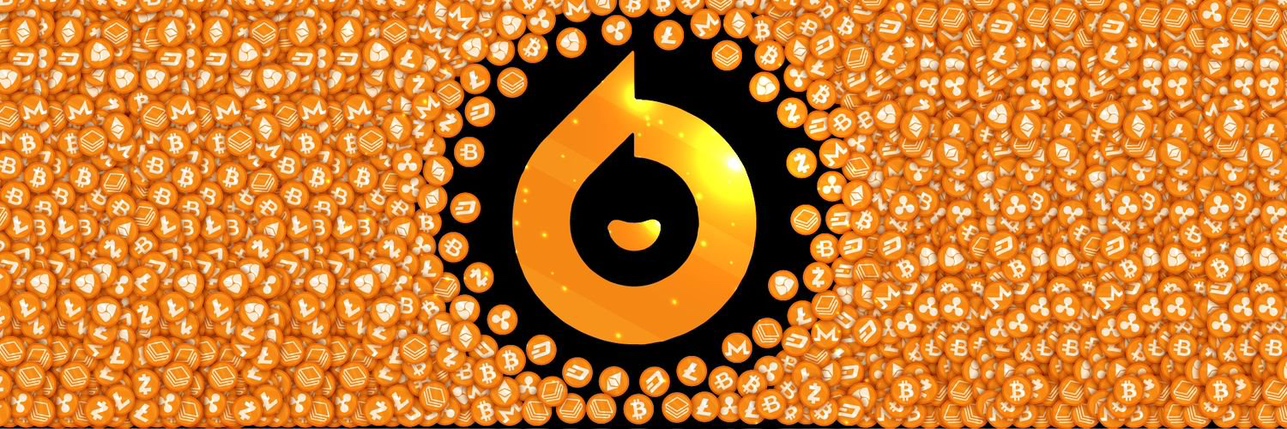
BNB priceBNB
BNB/USD price calculator
Live BNB price today in USD
Do you think the price of BNB will rise or fall today?
BNB market Info
About BNB (BNB)
What Is Binance Coin?
Binance Coin (BNB) is a digital currency introduced by the world's largest cryptocurrency exchange, Binance in 2017. Binance Coin was originally an ERC-20 token, a standard common among Ethereum-based tokens. However, in 2019, it migrated to its own blockchain, BNB Chain. The chain is a merge from two blockchains Binance Chain and Binance Smart Chain. This independent chain allows BNB to exist outside of Ethereum's infrastructure and grants Binance the ability to tweak and improve its performance.
BNB is a utility token that provides users with a diverse range of services. It can be used to pay for transaction fees on the Binance platform at a discounted rate, participate in token sales on the Binance Launchpad, make in-store payments, and even book travel accommodations.
Resources
Official website: https://www.binance.com/en/bnb
How Does Binance Coin Work?
Binance operates as a comprehensive ecosystem for digital assets that encompasses centralized exchanges (CEX), decentralized exchanges (DEX), blockchain networks, and various cryptocurrencies. At its core is the BNB Chain, the principal blockchain network, which relies on the Proof of Stake (PoS) and Proof of Authority (PoA) consensus mechanisms to validate transactions and secure the network.
This network is divided into two distinct sub-chains. The BNB Beacon Chain, previously known as Binance Chain, takes charge of governance decisions within the network. In contrast, the BNB Chain, formerly referred to as Binance Smart Chain, is compatible with Ethereum Virtual Machine (EVM), allowing it to support a wide variety of decentralized applications (dApps). Most on-chain transactions occur on the BNB Chain, demonstrating its integral role within the Binance ecosystem.
Binance Coin’s Role in the Binance Ecosystem
Binance Coin (BNB) is the native cryptocurrency of the Binance ecosystem and serves multiple roles that extend far beyond discounted trading fees on the Binance exchange. Initially launched to incentivize trading, BNB has evolved into a versatile utility token with a wide array of applications. It acts as a bridge currency for converting different cryptocurrencies and plays a pivotal role in Binance Launchpad, where it allows users to participate in new blockchain project token sales. Additionally, BNB is integral to the BNB Chain, where it functions as the "gas" for transactions and smart contracts, making it essential for the growing decentralized finance (DeFi) sector.
The value and utility of BNB are further enhanced by various mechanisms and strategic initiatives. Binance conducts quarterly "token burns" to reduce the BNB supply and potentially increase its price. The coin is also increasingly accepted for real-world applications like travel bookings and credit card payments, thanks to partnerships like the one with VISA for the Binance crypto card. With its expanding use-cases and strategic importance in both the Binance ecosystem and the broader crypto landscape, BNB has established itself as a multifaceted asset that offers users a range of benefits and investment opportunities.
What Determines Binance Coin's Price?
Understanding the factors that influence Binance Coin's price is crucial for both investors and traders in the cryptocurrency market. One of the primary determinants of Binance Coin value is its utility within the Binance ecosystem. BNB is used to pay for transaction fees on the BNB Chain, and users who opt to pay fees in BNB often receive discounts ranging from 10% to 25%. Additionally, Binance conducts quarterly coin burns, reducing the supply of BNB based on trading volume, thereby affecting the Binance Coin market cap and, in turn, its USD price. The coin burn events are designed to continue until 50% of the total supply (100 million BNB) is destroyed, adding a deflationary aspect to the Binance Coin ROI.
Another factor that plays into BNB price prediction is the overall market sentiment and trading volume. Binance Coin price history shows that it has been susceptible to broader market trends, including regulatory news. For instance, SEC investigations and geopolitical events like Russia's invasion of Ukraine have had noticeable impacts on the BNB to USD exchange rate. Moreover, Binance Coin's technical analysis often includes cash flow calculations, which consider the sum of transaction fees saved over Binance's discount lifecycle. This approach accounts for a significant portion of BNB coin value, making it a unique asset compared to traditional cryptocurrencies like Bitcoin.
The Binance Coin price analysis also extends to its competition and positioning in the market. Binance Coin vs Bitcoin price movements can offer insights into investor preferences and risk appetites. Furthermore, the Binance Coin price forecast often incorporates its adoption in decentralized finance (DeFi) applications and non-fungible tokens (NFTs), which have been growing sectors in the blockchain space. With a market cap that has made it one of the largest cryptocurrencies, the current BNB value is not just a reflection of market speculation but also its intrinsic utility and growing adoption in various blockchain applications.
Conclusion
In conclusion, Binance Coin (BNB) is an integral part of the expansive Binance ecosystem. Initiated as an ERC-20 token, it has grown into a versatile digital asset with its own blockchain, enabling greater control and efficiency. BNB's broad range of utilities, from transaction fee discounts and token sale participation on the Binance platform, to serving as the 'gas' for the execution of transactions and smart contracts on the BNB Chain, highlights its critical role in the platform. With increasing use cases and integration across numerous platforms, BNB's value extends beyond the Binance ecosystem, underlining its position as a prominent player in the digital currency space.
Related Articles about Binance Coin
AI analysis report on BNB
BNB Price history (USD)
 Lowest price
Lowest price Highest price
Highest price 
What is the highest price of BNB?
What is the lowest price of BNB?
BNB price prediction
When is a good time to buy BNB? Should I buy or sell BNB now?
Hot promotions
Global BNB prices
FAQ
How is BNB different from other cryptocurrencies?
How does the Binance token burn affect BNB's value?
Is BNB a good investment?
What is the maximum supply of BNB, and how does it impact its price?
How does staking BNB work, and does it influence its value?
What are the use cases of BNB?
What factors influence the price of BNB?
Where can I check the current price of BNB?
What is the price prediction for BNB in 2023?
Is BNB a good investment for the long term?
How does BNB's price compare to its all-time high?
What upcoming events could affect BNB's price?
What is the historical price trend of BNB?
How does staking BNB influence its price?
What should I do if I want to trade BNB?
How can I track BNB price changes effectively?
What is the current price of BNB?
What is the 24 hour trading volume of BNB?
What is the all-time high of BNB?
Can I buy BNB on Bitget?
Can I get a steady income from investing in BNB?
Where can I buy BNB with the lowest fee?
Related cryptocurrency prices
Where can I buy crypto?
Video section — quick verification, quick trading

BNB/USD price calculator
BNB resources
Tags:
Bitget Insights





Prices of newly listed coins on Bitget








